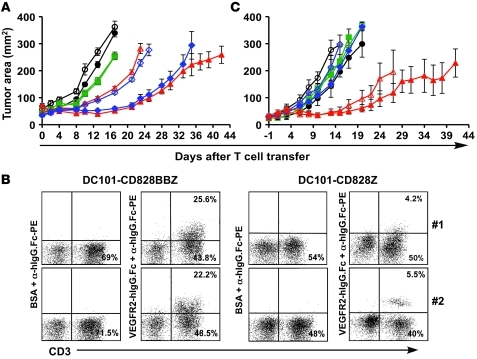Figure 6. Impact of exogenous rhIL-2, 4-1BB signaling, and host lymphodepletion on tumor treatment effect of DC101-CAR–transduced T cells.
(A) DC101-CAR–transduced T cells required exogenous rhIL-2 but not 4-1BB signaling for effective tumor treatment. C57BL/6 mice bearing subcutaneous B16-F10 tumors received 2 × 107 syngeneic T cells transduced with DC101-CAR containing the 4-1BB signaling domain (DC101-CD828BBZ, blue diamonds) or lacking 4-1BB (DC101-CD828Z; red triangles) or an empty vector (green squares). Control groups received no T cells (black circles). Groups represented by filled symbols received exogenous rhIL-2 administration, and those represented by open symbols did not receive rhIL-2. (B) 4-1BB signaling enhanced persistence of DC101-CAR–modified T cells in vivo. Tumor samples from 2 mice treated with DC101-CAR–transduced T cells plus rhIL-2, shown in Figure 4A, were harvested on day 30 after T cell transfer. The low-density cell fraction was prepared from tumor samples, and cell surface expression of DC101-CAR was determined by FACS. The percentage of CD3+ T cells expressing DC101-CAR in the lymphocyte-gated region of the forward and side scatter profiles is shown in top right quadrants, and the percentage of CD3+ T cells negative for DC101-CAR expression is shown in the bottom right quadrants. (C) Impact of host lymphodepletion on in vivo tumor therapeutic effect of DC101-CAR–engineered T cells. C57BL/6 mice bearing subcutaneous B16-F10 tumors received 2 × 107 syngeneic T cells transduced with DC101-CAR (red triangles), SP6-CAR (blue diamonds), or an empty vector (green squares) plus rhIL-2 or were not treated with T cells (black circles). Mice in groups represented by filled symbols received 5 Gy TBI prior to T cell transfer, and mice in groups represented by open symbols did not receive 5 Gy TBI. (A and C) Serial, blinded tumor measurements were obtained, and the products of perpendicular diameters were plotted ± SEM.

